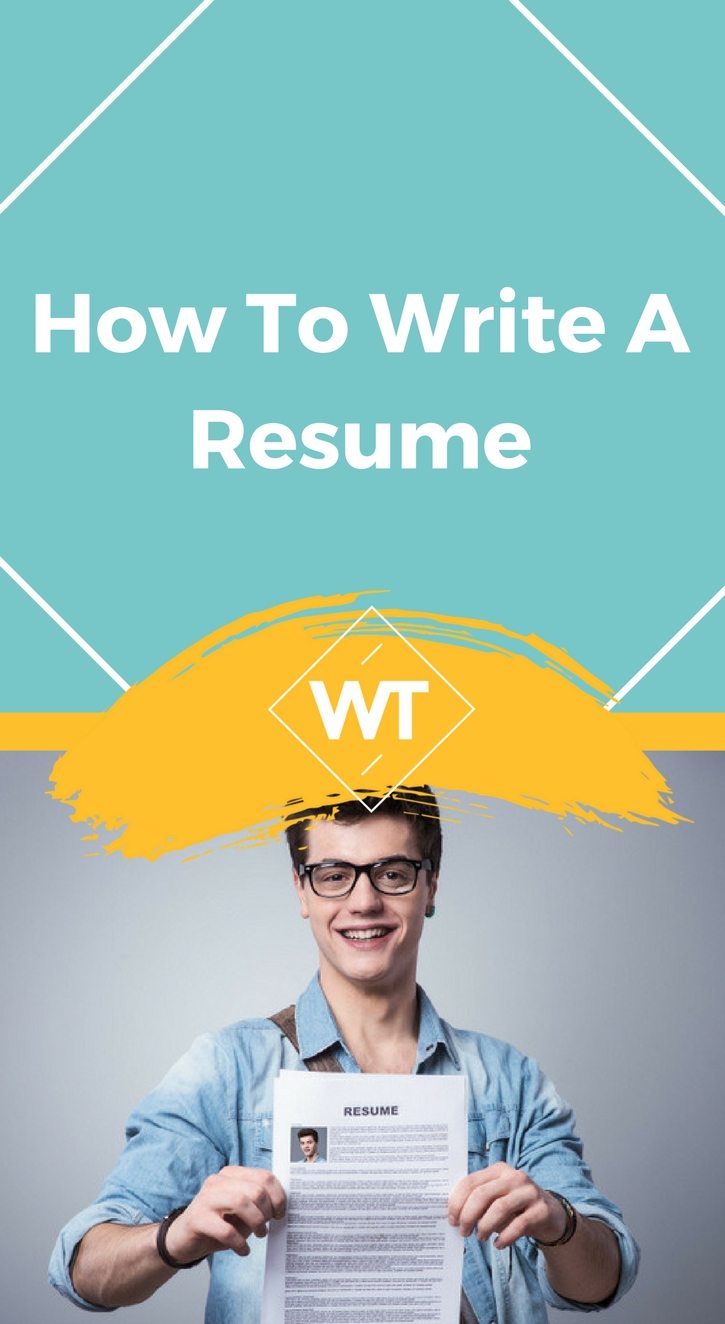How to Write a Resume

So you want to know how to write a resume? Or maybe give the existing one a face-lift by adding your latest accomplishments to the list? Good luck! Resume writing can be a challenging, time consuming and surprisingly entertaining project. How do you make sure that you convey that you are the best individual suited for the job without explicitly saying so?
How much of information is too much and how much is too little? And most importantly, how do you actually make an impression on another mind that you still have not met and have only about 10 minutes to get across to? We explore these and some other questions that you will encounter while learning how to write a resume in this piece.
To keep or to leave out – That is the Question
The first decision point is what you are going to include in your resume and what are you going to leave out. And while it may be heartbreaking to exclude the award you won for a home project executed in fifth grade, you will just have to do without it. It is important to understand that your resume is among many, many others that the reader is going through.
Hence it is important to stick to the information that is relevant to the situation at hand. Further, too much content means a sheaf of papers that the reader needs to go through.
Instead perk up their interest by mentioning relevant items in a standard two-page resume and include the rest in a separate statement or even better, save it for the interview!
Set a Direction
Once you have decided what you are going to put in the resume, think about how you are going to present the content. It is a good idea to begin the resume with a career objective and/or a professional summary.
Step 1: Objective
While the resume does need to include your previous experience, an objective indicates that you are well aware of (and comfortable with) a forward-looking direction in your career. Here the trick is to present your goals but in a manner that it focuses on the organization and the role that you wish to represent. Talk about how you have the necessary competencies that will help the company should they decide to offer you the post.
Thus, instead of simply saying “Looking for a challenging and responsible position in your marketing division,” re-word it to something like “Seeking a responsible position where I can leverage my customer-relation skills to improve the organization’s market position and client satisfaction.”
Needless to say, the objective is specific to a particular role and company and hence needs to be revisited every time you send out your resume. Also your objective should be crisp and not more than 2 – 3 lines long. If you cannot say it in a short sentence, you are most likely faking it.
Step 2: Professional Summary
Along similar lines, include a short summary of your past glories and achievements at the head of the resume. Include facts like number of years of experience, professional certifications, important posts held, and educational qualifications until your first major degree in this section. This is a summary so leave out details of projects or company as that will come in the main portion of the resume itself. Avoid writing the summary in paragraphs as it makes for difficulty in reading. Instead present it in 5 to 7 short, bulleted sentences not exceeding more than 2 lines each.
A good summary might read something like this:
- Over XX years of experience in project planning, execution and management across varied domains of telecom, software and hardware
- Proven success in project delivery in a global environment with special exposure to Europe and North America
- Specialized area of interest in project cost management
- Demonstrated expertise in handling teams of size up to 50+ members
- Certified XXX from XXX
The building blocks – Experience and Education
After the objective and the summary, you need to construct the main body of the resume.
Step 3: Professional Work Experience
The best approach here is to start with professional work experience and list out your previous jobs in a reverse chronological order. You can start with mentioning the role or designation, the company and the duration within which you served in that capacity. List the job function briefly, but the more important things to put down here are your achievements in the particular role.
No prospective employer wants to know what the job asked of you; instead they are curious about what difference you made at the job as that would indicate your ability to make a difference at their organization.
When you talk of the achievements, there are certain crucial points that you need to bear in mind.
- State Accomplishments: Clearly differentiate between what is an expected job responsibility and what is an accomplishment and mark them separately. It is not only misguided to believe that something that was expected of you is an achievement but also disastrous to let a prospective employer know that you think so!
- Use Verbs: Begin every accomplishment with a powerful verb, an action word: “Accomplished,” “Improved,” “Awarded,” “Delivered,” “Led,” “Created” and so on. These grab the reader’s attention and also quickly communicate your accomplishment without him/her having to search for it amid a word maze.
- State Facts and Figures: Back up statements wherever possible with facts and figures: “Improved process efficiency by 20%,” “Awarded Most Valuable Player among a team of 20 individuals.” It is easier to appreciate the achievement when you set a context using supporting data.
- Shuffle Achievements: Re-look at the achievements that you are listing so that the ones which are relevant to the current position come up on top. If there are many achievements listed, the reader tends to follow only the first 2 or 3 and gives the rest a pass.
Step 4: Educational Qualifications
After the work experience comes the educational qualifications. Start with your most recent degree and go down until your first—Doctorate followed by Masters followed by Bachelors. The worst mistake you can make here is to include your High School, Middle School or even your Primary education. You would hardly be applying for a professional role without clearing these levels!
Mention the school/college, location and your percentile or GPA as the case may be. Be sure to include special honors and scholarships at this point.
Gimme more!
The topics discussed above are kind of the mandatory areas when it comes to building a resume. These can be followed by some separate sections such as:
Step 5: Professional Achievements and Associations
Where you can include industry- or discipline-specific certifications that you may have obtained.
Step 6: Positions of Responsibility
These are beyond the ones that come with your job description, like, say for example the Industry coordinator at a B-School fest.
Step 7: Technical skills
Detailing the package, tool, software, version, hardware, platform etc.
Step 8: Analytical skills
Analytical skills as relevant to the particular role.
Step 9: Extra-Curricular Activities
Many individuals include a section on Hobbies. While this may seem innocuous, it is not exactly the information that a prospective employer wishes to read in the resume. And it is professional suicide to mention hobbies like reading, listening to music or the worst that I have seen: chatting with friends!
The rule here is simple. Include Extra-Curricular Activities but only those that have a relationship to the role that you are applying for and actually contribute to building your qualified profile.
For example, if you are applying for the role of a lecturer, you may mention debate or elocution activities that you have participated in and won or voluntary education programs that you may have carried out.
Wrap up your resume with a separate section for Personal Information or Contact Details. Make sure that this is mentioned all in one place—either at the start of the resume or at the end and suitably highlighted. This section should include your address, email and telephone details and date of birth.
Companies in the present day pride themselves on being gender- and race-neutral so avoid mentioning these or your marital status, family details etc. The idea of this section is simply to provide the means to contact you should the company wish to do so.
In Conclusion
Writing the best resume is never easy. However it may help to stop thinking of the exercise as ‘writing’ your resume and instead approach it as ‘building’ your resume because a good resume does just that. It builds the profile of a complete individual before an audience that has never met him/her before and can only get an idea by reading about them.
And just as building anything requires planning and a step-by-step approach, I sincerely advocate a systematic approach towards finalizing your resume.
Not only does this make the process simpler but also it ensures that all that is necessary is kept in and the unnecessary is left out. Here’s hoping that these tips help you move closer to building a good resume and landing that dream job. All the best!









Leave a Reply